Km 6960-8800. West of Santa Cruz.
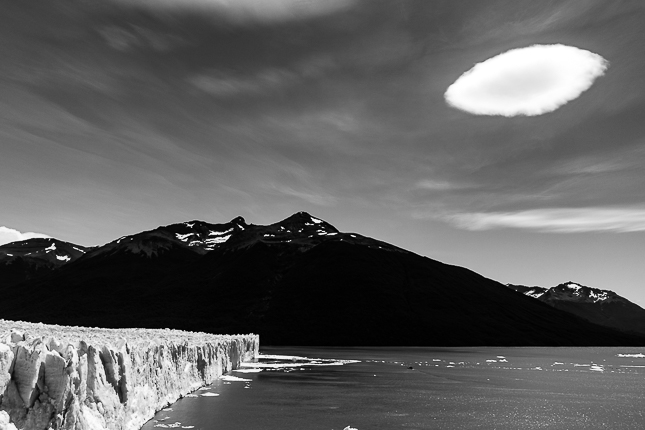 Perito Moreno Glacier. Santa Cruz. 2018 © Leo Micieli
Perito Moreno Glacier. Santa Cruz. 2018 © Leo Micieli
Km 6960-8800. West of Santa Cruz. April 9th, 2018.
The beginning of this trip is practically a year and a half ago, but when I look back the feeling is quite different. It rather seems like hundreds of short days, instants, within a journey. I lost my own reference about solid time and space in order to enter in other reality, more flexible and closer to relative space-time physics. Although it's true that I'm being highly influenced by this greatness in which I'm living my days, greatness of people and places, with wide open mind after passing through intense and diverse experiences concentrated in almost eighteen months. It's impossible not to become different from when I arrived.
The road and the steps go to the North, the only possible way out from Tierra del Fuego. In Rio Gallegos I head towards the West, further to the sea and closer to the mountains. It starts to appear other physiognomies, shapes change as if they were alive, or they really are. Other places are coming, other towns, each one of them with its particular characteristics, and arriving is like meeting civilizations distant from each other.
I understand that it's inevitable to become myself different from when I arrived as otherwise there wouldn't be possible to keep traveling. It's necessary to be like this territory, which continuously changes from the ocean to the plateau and the steppe, to the mountains and the lakes. The one I was is far away, and this one I am now has seen enough to choose keeping on traveling through this incredible Patagonian land.
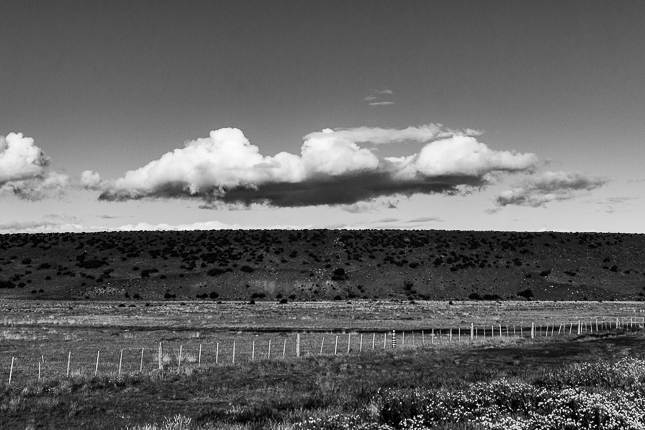 Santa Cruz. 2018 © Leo Micieli
Santa Cruz. 2018 © Leo Micieli
The asphalt slips under my feet as if I am still. I leave Río Gallegos late in the afternoon when the sun is no longer in the zenith. Shadows enlarge every minute towards El Calafate, the next city in this journey.
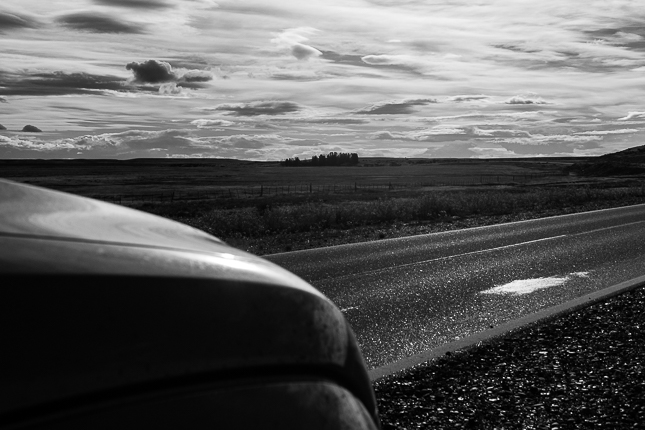 Provincial Route 5. Santa Cruz. 2018 © Leo Micieli
Provincial Route 5. Santa Cruz. 2018 © Leo Micieli
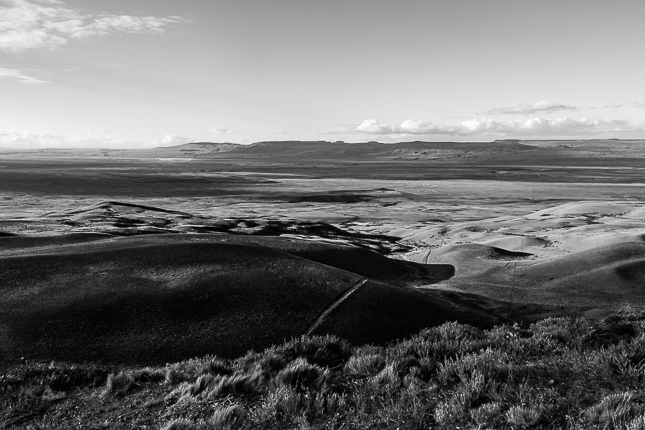 Santa Cruz. 2018 © Leo Micieli
Santa Cruz. 2018 © Leo Micieli
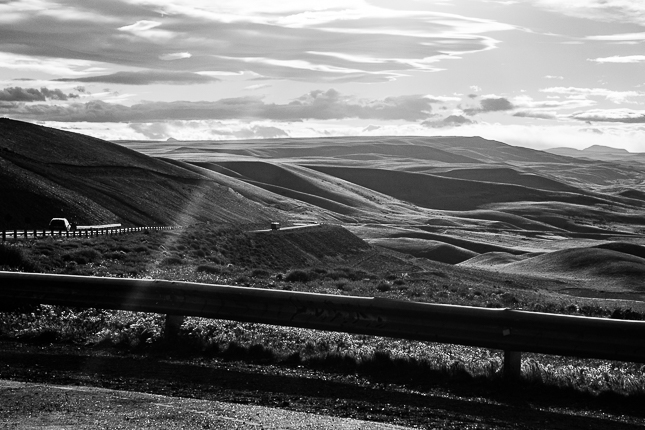 Santa Cruz. 2018 © Leo Micieli
Santa Cruz. 2018 © Leo Micieli
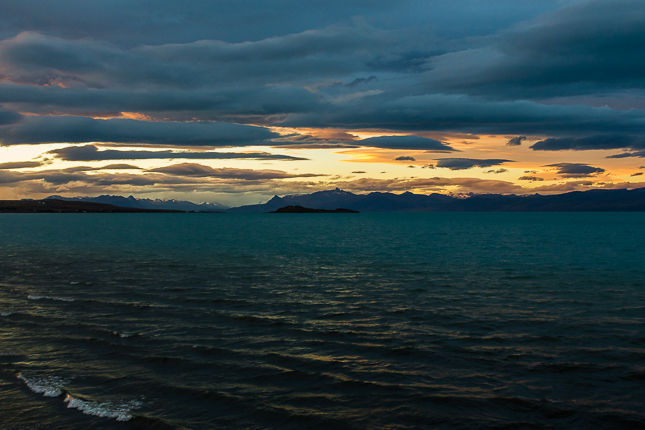 Lago Argentino. El Calafate, Santa Cruz. 2018 © Leo Micieli
Lago Argentino. El Calafate, Santa Cruz. 2018 © Leo Micieli
I visited El Calafate during my first trip to Patagonia, in 2002. From there to now it's noticed a huge change. As a parameter, on this sixteen years the population has grown more than four times, which indicates the activity in the city.
Located on the shores of the big Lago Argentino, it's a key city to get acces to Los Glaciares National Park, among other beautiful and rich destinations, which makes this city an strategic point for tourists from all over the World who come to visit these places. It's a neat and organized place, there's a lot of money on it, abundant commercial offer with high-line brands, restaurants, hotels and hostels everywhere. The prices fit with higher incomes; the reference is not the national currency but the foreign one: dollars or euros.
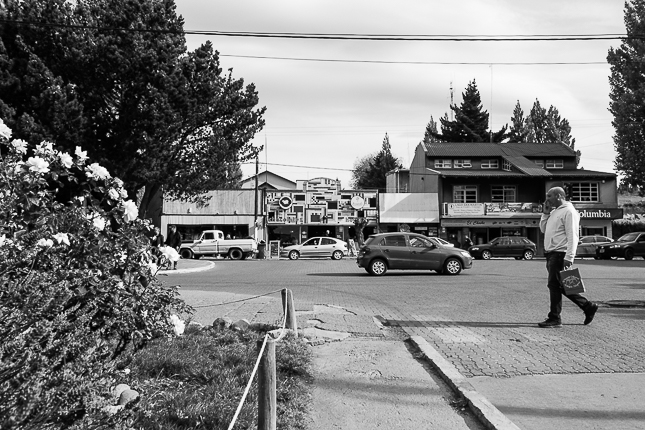 El Calafate, Santa Cruz. 2018 © Leo Micieli
El Calafate, Santa Cruz. 2018 © Leo Micieli
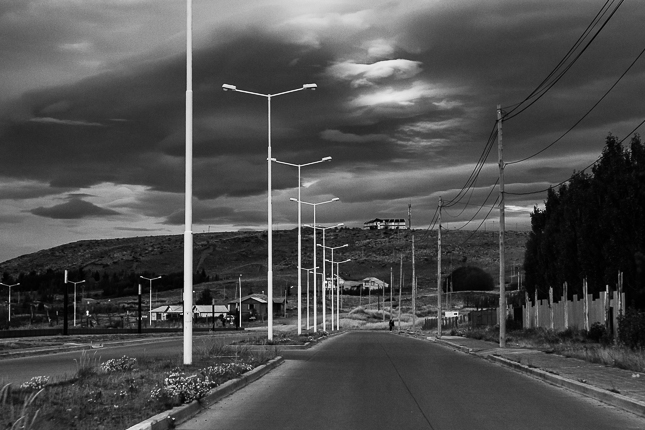 Costanera Ave. El Calafate, Santa Cruz. 2018 © Leo Micieli
Costanera Ave. El Calafate, Santa Cruz. 2018 © Leo Micieli
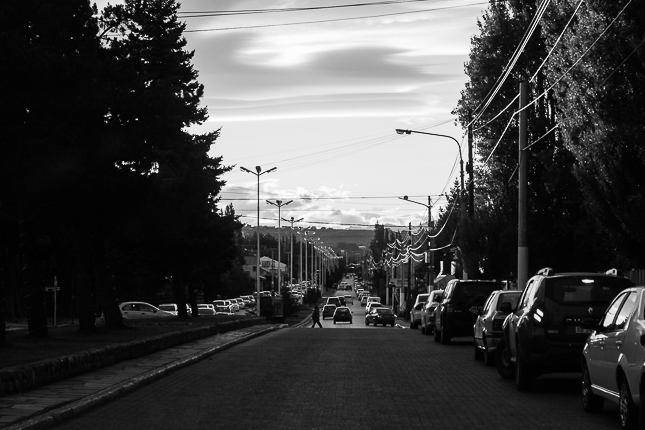 El Calafate, Santa Cruz. 2018 © Leo Micieli
El Calafate, Santa Cruz. 2018 © Leo Micieli
At 80 km far from El Calafate, in Los Glaciares National Park, is the Perito Moreno Glacier. It's possible to see it from the road several kilometers before arriving. It's impressive to see its enormity from so far away. And it takes the breath out to see it from a few meters.
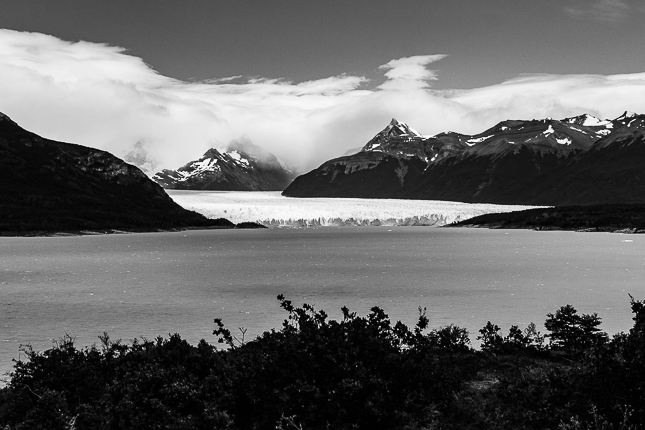 Perito Moreno Glacier, Santa Cruz. 2018 © Leo Micieli
Perito Moreno Glacier, Santa Cruz. 2018 © Leo Micieli
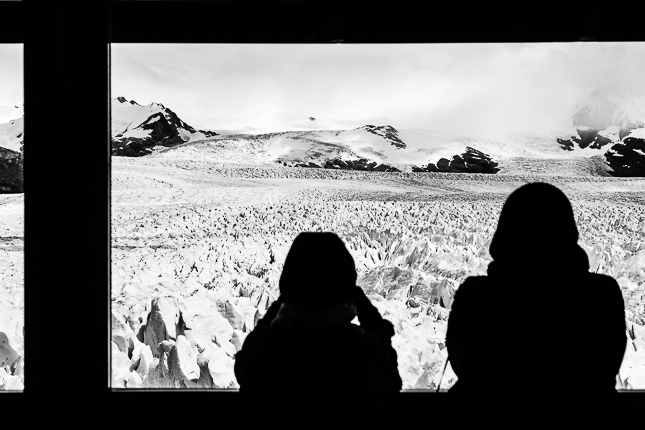 Perito Moreno Glacier, Santa Cruz. 2018 © Leo Micieli
Perito Moreno Glacier, Santa Cruz. 2018 © Leo Micieli
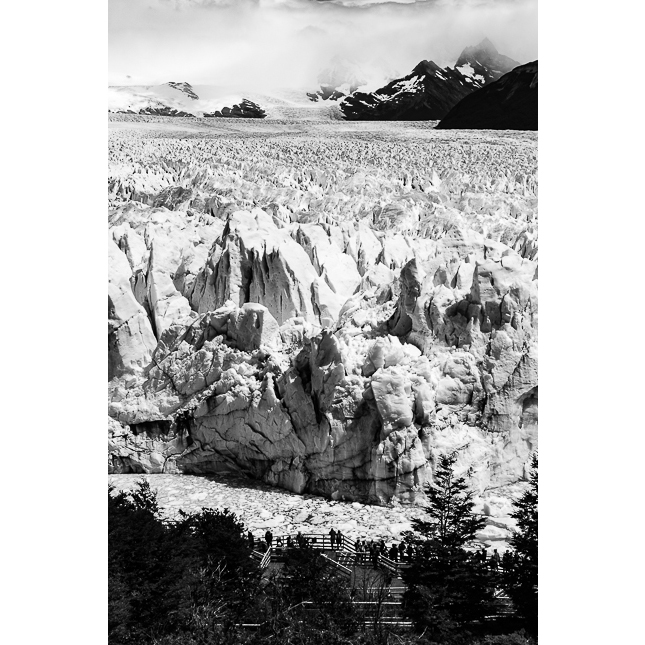 Perito Moreno Glacier, Santa Cruz. 2018 © Leo Micieli
Perito Moreno Glacier, Santa Cruz. 2018 © Leo Micieli
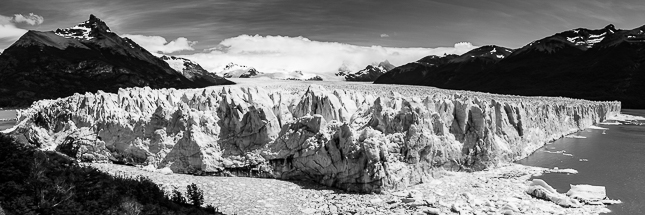 Perito Moreno Glacier, Santa Cruz. 2018 © Leo Micieli
Perito Moreno Glacier, Santa Cruz. 2018 © Leo Micieli
Here in Patagonia everything is extense. Although being in front of this colossal mass of ice surrounded by mountains and a beautiful turquoise-colored lake, Lago Argentino, makes you rethink the definition of 'extense'. We are not used in our daily life to witness things of such dimension, though rather than dimension itself it's the sensory and psychological impact provoqued by something natural, gigantic, unique and unrepeatable. You have to look and watch in other way, to adapt again the sight to something new, as if the eyes were opening by the first time. Perspective deforms, you want to extend your arms to grab a piece of ice, the brain is constantly fooled before something that cannot understand, like an optical illusion, and that silently moves milimeter by milimeter without knowing.
Hermann Hesse said: "gentleness is stronger than severity, water is stronger than rock, love is stronger than force". The three states of water take place here, and in their apparent staticity there's an energy that surrounds it all, as a terrenal god. There's nothing that may disturb the peace of this place, not even the break of ice blocks and their fall from several meters. Everything is part of the same phenomenon and everything is perfect.
 Perito Moreno Glacier, Santa Cruz. 2018 © Leo Micieli
Perito Moreno Glacier, Santa Cruz. 2018 © Leo Micieli
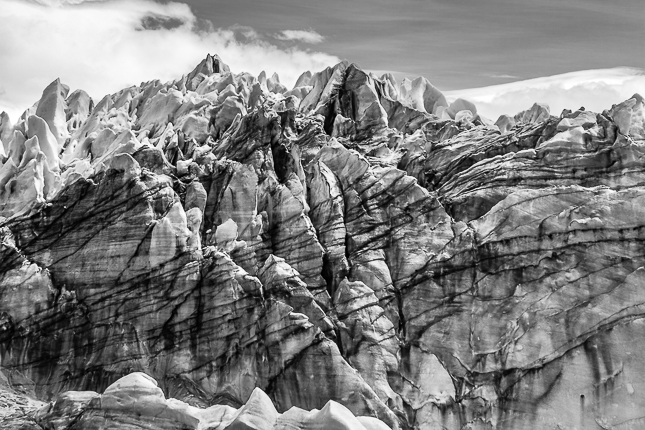 Perito Moreno Glacier, Santa Cruz. 2018 © Leo Micieli
Perito Moreno Glacier, Santa Cruz. 2018 © Leo Micieli
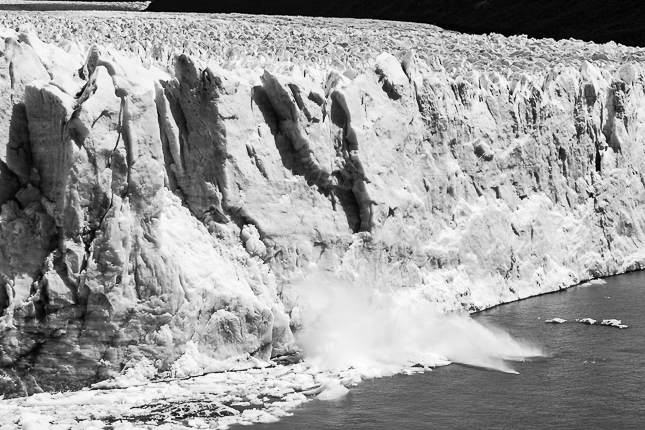 Ice breaks off. Perito Moreno Glacier, Santa Cruz. 2018 © Leo Micieli
Ice breaks off. Perito Moreno Glacier, Santa Cruz. 2018 © Leo Micieli
Arriving to this place in my trip implies that I met the starting and ending point of the Santa Cruz River. Perito Moreno Glacier is one of its affluents and ends in the estuary that bathes the towns of Cmte. Luis Piedrabuena and Puerto Santa Cruz, places in where I spent several weeks on the past year, leading the water into the Atlantic. The river is 385 km long, without considering its furthest affluents. In those towns I was told about the building of two dams over the course of the river, permanently affecting the ecosystem and provoking ecological, economic and social irreversible damages.
Patagonia is not exempt from the consequences of human policies and polluting forms to produce energy. This beautiful river is the last glacier-originated river that runs free from the Andes to the Atlantic, this means that nothing modifies, stops or varies its natural course. It's sad to imagine that such a beautiness and richness that Nature provides would be discarded as waste in the wake of obsolete technologies and doubtful promises of work. We should forget, for instance, about the description some lines before about the glacier as it would be also affected irreversibly, even more than it is now.
This video is made by Aves Argentinas, Banco de Bosques, Fundación Ambiente y Recursos Naturales, Fundación Vida Silvestre Argentina and Fundación Flora y Fauna. It explains in detail each aspect referred to the natural characteristics of the river and the consequences if it would be modified, among other things.
Link---> Killing the River. Dams at any cost in Santa Cruz. Documentary.
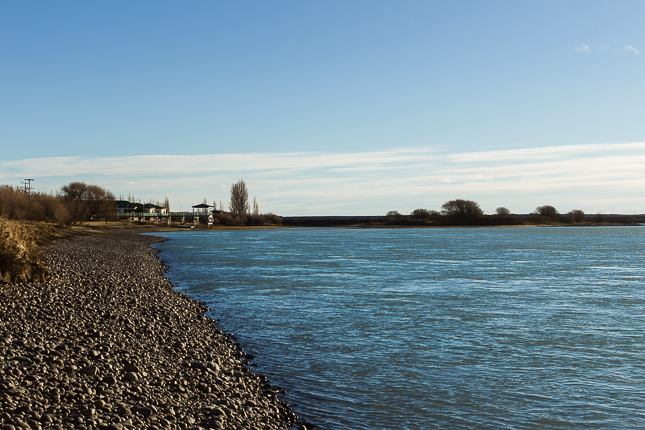 Santa Cruz River. Isla Pavón, Cmte. Luis Piedrabuena, Santa Cruz. 2017 © Leo Micieli
Santa Cruz River. Isla Pavón, Cmte. Luis Piedrabuena, Santa Cruz. 2017 © Leo Micieli
Back to El Calafate, the journey continues to the South this time, through Río Turbio and other nearby towns.
The hours go through a quite different landscape from which I watched in El Calafate and the Glacier. Steppe, dirt road, settlements on the edge of the sun, ranches and a rural school. Again, the roughness of Patagonia.
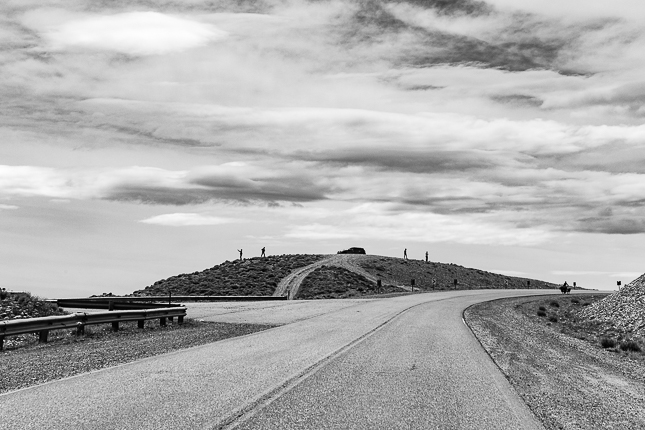 Provincial Route 11. Santa Cruz. 2018 © Leo Micieli
Provincial Route 11. Santa Cruz. 2018 © Leo Micieli
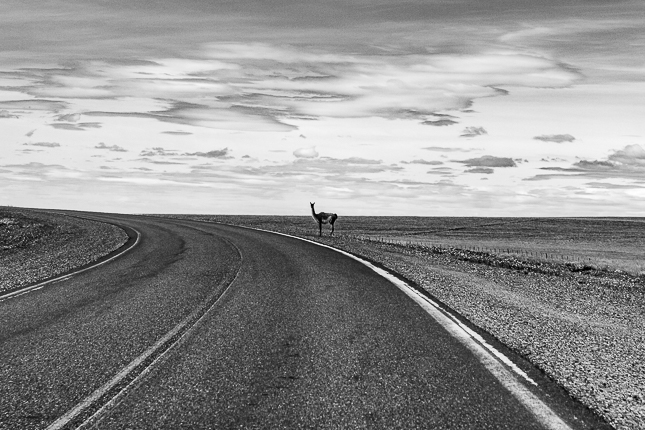 Provincial Route 11. Santa Cruz. 2018 © Leo Micieli
Provincial Route 11. Santa Cruz. 2018 © Leo Micieli
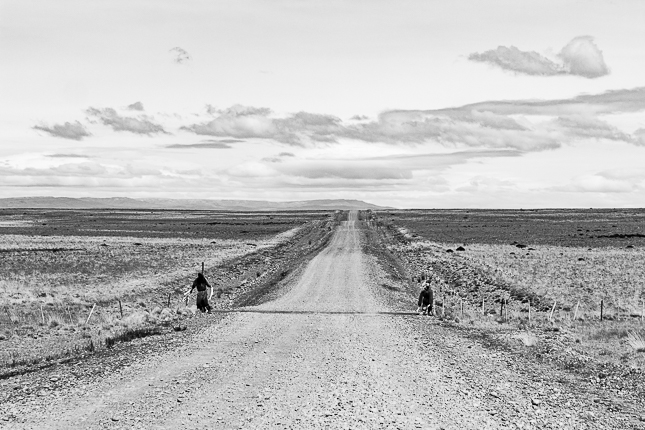 Cattle guard. National Route 40, Santa Cruz. 2018 © Leo Micieli
Cattle guard. National Route 40, Santa Cruz. 2018 © Leo Micieli
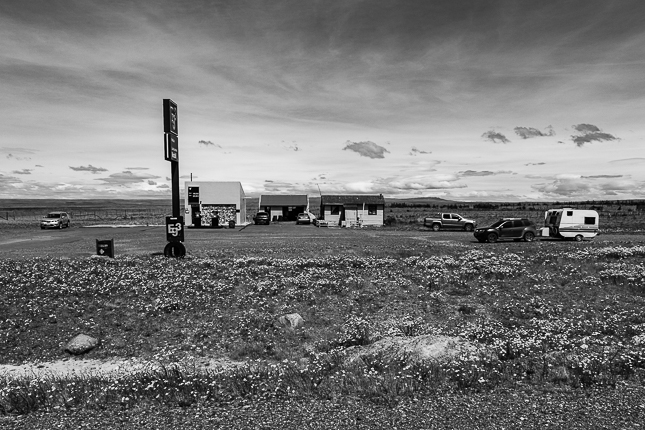 Gas Station. Tapi Aike, Santa Cruz. 2018 © Leo Micieli
Gas Station. Tapi Aike, Santa Cruz. 2018 © Leo Micieli
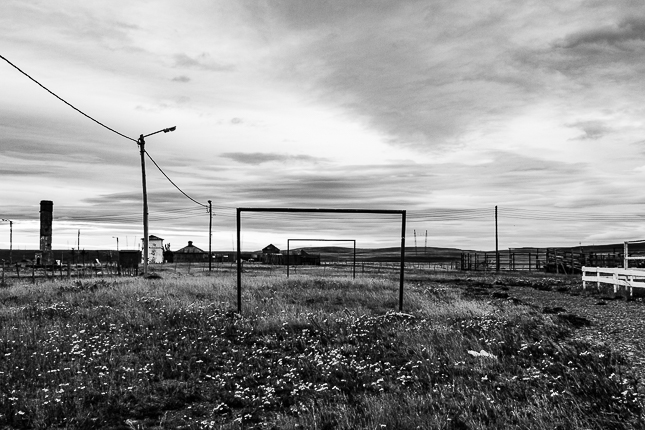 Rural School No. 34 'Fuentes del Coyle'. Santa Cruz. 2018 © Leo Micieli
Rural School No. 34 'Fuentes del Coyle'. Santa Cruz. 2018 © Leo Micieli
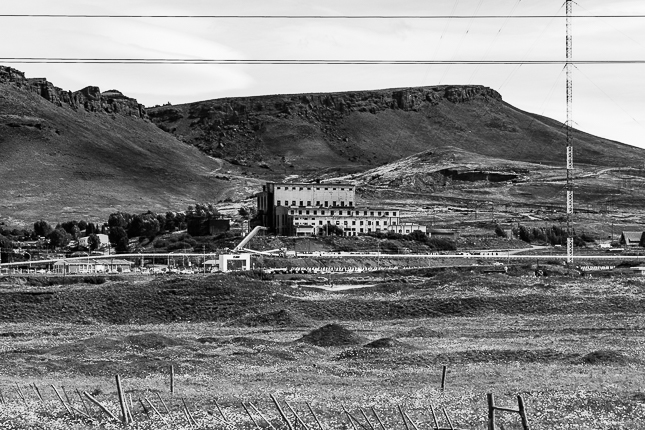 Río Turbio. Santa Cruz. 2018 © Leo Micieli
Río Turbio. Santa Cruz. 2018 © Leo Micieli
The arrival to Río Turbio is in a hard moment for the people of the town: the previous day the authorities fired hundreds of workers of Yacimiento Carbonífero Río Turbio (YCRT), the state-owened company and the engine of the city. More than two hundreds telegrams were sent only the first day, and almost five hundred during the next days, in adittion to the invitation to take the voluntary retirement in other cases.
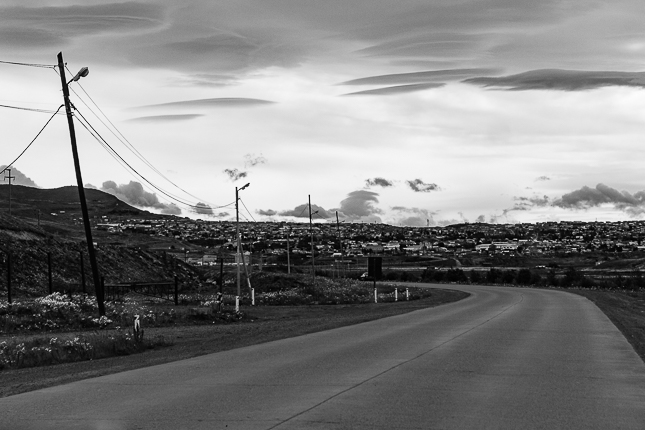 Río Turbio. Santa Cruz. 2018 © Leo Micieli
Río Turbio. Santa Cruz. 2018 © Leo Micieli
 Thermoelectric Central under construction. Río Turbio. Santa Cruz. 2018 © Leo Micieli
Thermoelectric Central under construction. Río Turbio. Santa Cruz. 2018 © Leo Micieli
 YCRT. Río Turbio, Santa Cruz. 2018 © Leo Micieli
YCRT. Río Turbio, Santa Cruz. 2018 © Leo Micieli
 Río Turbio. Santa Cruz. 2018 © Leo Micieli
Río Turbio. Santa Cruz. 2018 © Leo Micieli
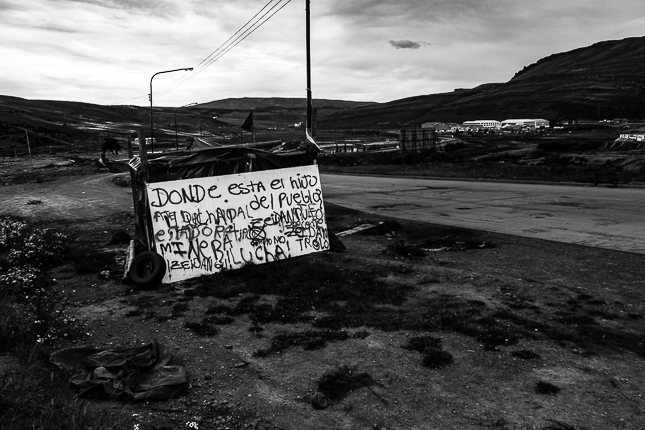 Río Turbio. Santa Cruz. 2018 © Leo Micieli
Río Turbio. Santa Cruz. 2018 © Leo Micieli
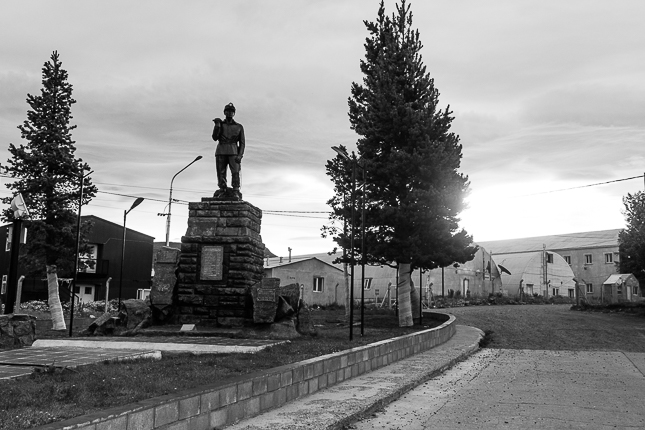 Coal Workers Memorial Plaza. Río Turbio, Santa Cruz. 2018 © Leo Micieli
Coal Workers Memorial Plaza. Río Turbio, Santa Cruz. 2018 © Leo Micieli
The mood is low and the temper is high in this city in where the main activity is concentrated in coal extraction and many families depend on this source. This also affects the towns of 28 de Noviembre and Julia Dufour, in the outskirts.
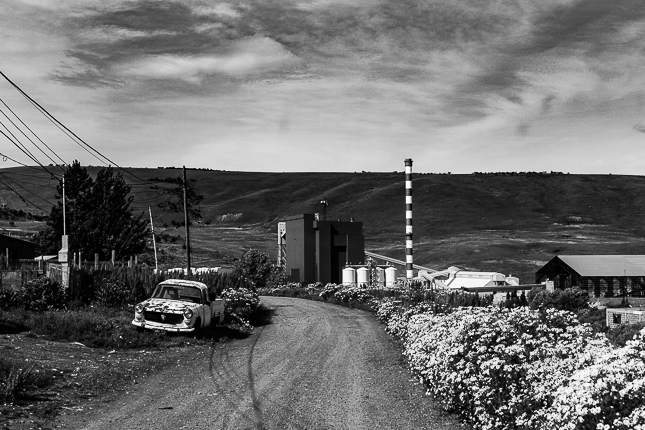 Julia Dufour. Santa Cruz. 2018 © Leo Micieli
Julia Dufour. Santa Cruz. 2018 © Leo Micieli
 28 de Noviembre. Santa Cruz. 2018 © Leo Micieli
28 de Noviembre. Santa Cruz. 2018 © Leo Micieli
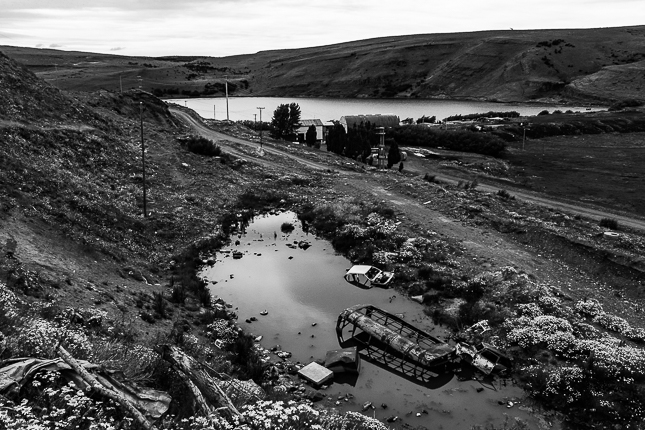 San José Dam. Río Turbio, Santa Cruz. 2018 © Leo Micieli
San José Dam. Río Turbio, Santa Cruz. 2018 © Leo Micieli
The protests continue on the days after my leaving. My stay here is short and during this time doubts and fears in front on the future persist in the people I meet in the city. Perplexity doesn't allow to take a clear direction.
I walk by the intricate streets on the afternoon and night. The city is not big but it's easy to get lost, parallel lines don't exist at all in its urban layout. Some stores are closed though it's near the weekend. The mood doesn't seem to have high points in general, apart from the labor circumstances. Cars, buildings and appliances abandoned at the side of the streets become the metaphore of the city.
The contrast between nearby locations is so high that the idea of entering to different dimensions becomes even bigger. The change is not progressive but abrupt, from the touristic to the industrial, from the inhabited to the isolated, from the exuberant to the rough.
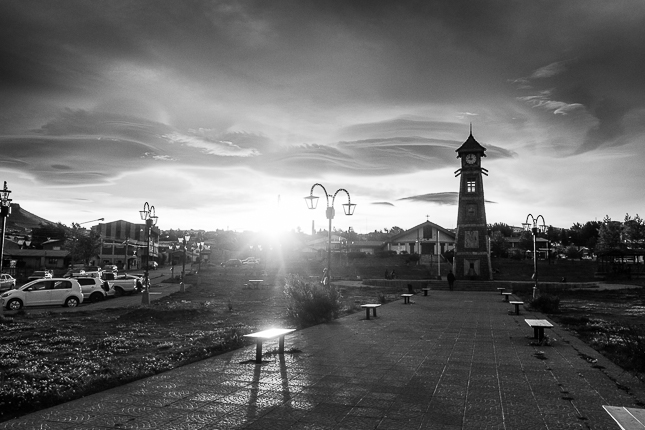 Río Turbio, Santa Cruz. 2018 © Leo Micieli
Río Turbio, Santa Cruz. 2018 © Leo Micieli
To emphasize the previous paragraph, the road continues to the North and then again towards the West, to the town of El Chaltén, skipping El Calafate which has already been visited and following by National Route 40 and Provincial Route 23.
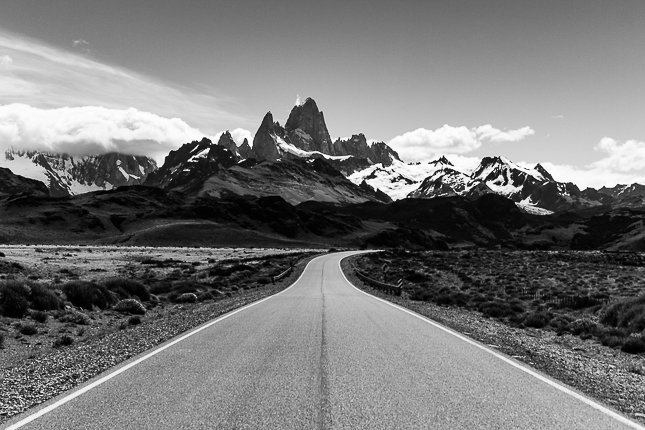 Chaltén Hill, also known as Fitz Roy Hill. El Chaltén, Santa Cruz. 2018 © Leo Micieli
Chaltén Hill, also known as Fitz Roy Hill. El Chaltén, Santa Cruz. 2018 © Leo Micieli
El Chaltén is one of the youngest towns in Argentina. Placed inside Los Glaciares National Park, is was founded in 1985 as a way to ensure sovereignty in a still in dispute area. Over the years it became into the National Capital of Trekking, and it is today and since a long time a must for tourist all over the World that look for adventure, outdoors, camping, trekking, climbing and Nature, with a touch of glamour considering the international visitors that arrive. Prices are also according to the foreing currency, perhaps a little bit reduced because of the "rustic air" that this place has.
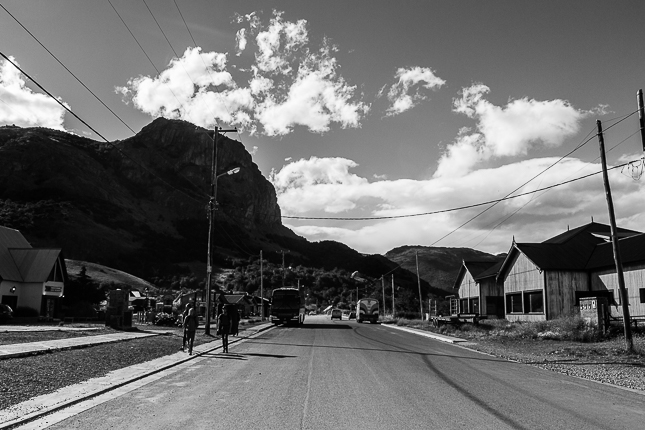 El Chaltén. Santa Cruz. 2018 © Leo Micieli
El Chaltén. Santa Cruz. 2018 © Leo Micieli
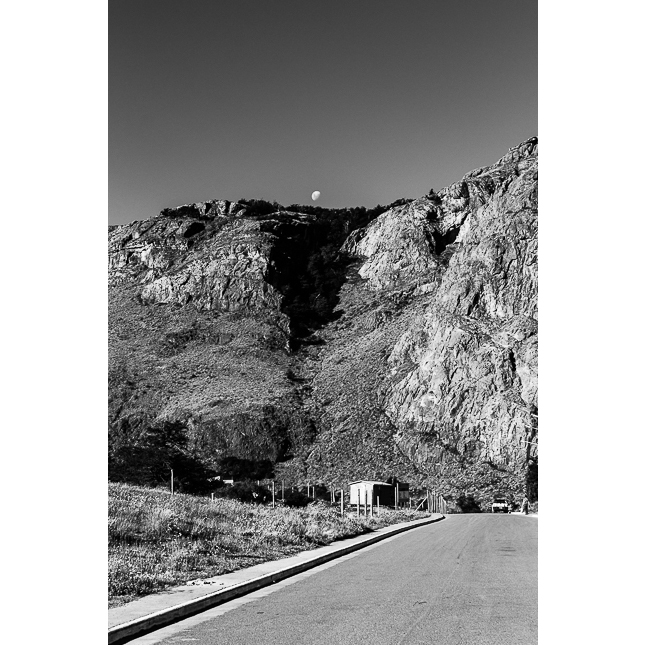 El Chaltén. Santa Cruz. 2018 © Leo Micieli
El Chaltén. Santa Cruz. 2018 © Leo Micieli
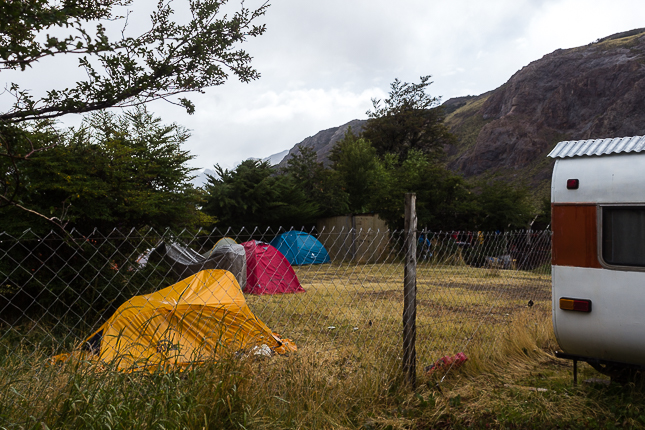 El Chaltén. Santa Cruz. 2018 © Leo Micieli
El Chaltén. Santa Cruz. 2018 © Leo Micieli
The environment is wonderful, the commercial and activity offer is abundant considering the isolation of the town, the choices to go walking and trekking are diverse. It has grown a lot both in population and infrastructure.
It's curious that the name of the town is El Chaltén and its symbol is still called Fitz Roy Mount. 'Chaltén' is the name that aonikenk indians gave to this sacred hill, and it means 'smoky mountain' due to the persistent presence of clouds smoothly touching its 3405 masl top.
It's also curious that whether here as in other parts of Patagonia the original names of lakes, hills and places evoke their geographic features and have a poetic intention, while those imposed by the whites are the surnames of their "discoverers", sometimes not even who visited them but the ones that are being honored. Osvaldo Bayer refers to this fact, which tells about the difference between two cultures.
 Chaltén Hill surrounded by clouds. El Chaltén, Santa Cruz. 2018 © Leo Micieli
Chaltén Hill surrounded by clouds. El Chaltén, Santa Cruz. 2018 © Leo Micieli
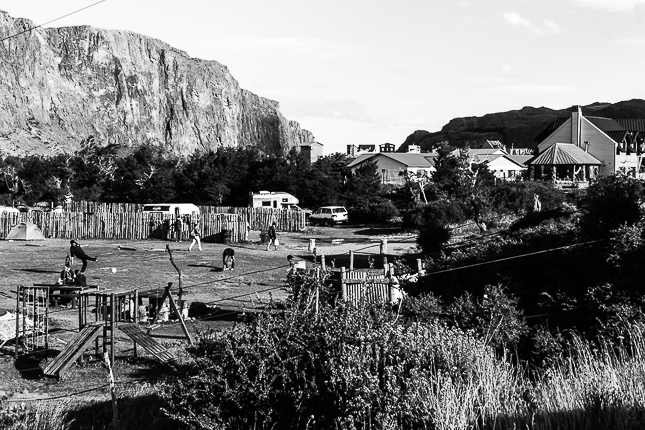 El Chaltén. Santa Cruz. 2018 © Leo Micieli
El Chaltén. Santa Cruz. 2018 © Leo Micieli
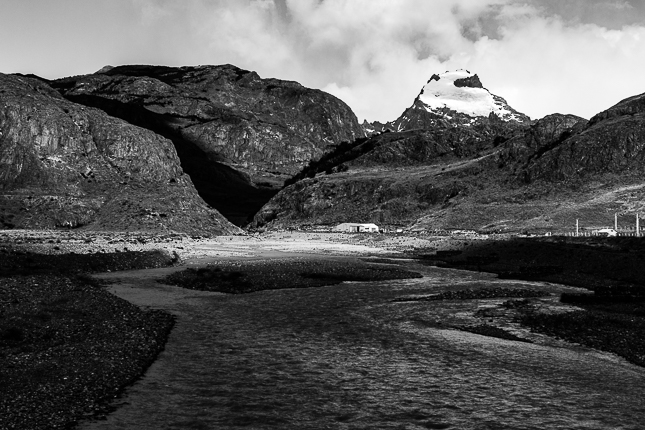 El Chaltén. Santa Cruz. 2018 © Leo Micieli
El Chaltén. Santa Cruz. 2018 © Leo Micieli
The journey follows the West part of Santa Cruz, and after several night hours of travel I arrive to Los Antiguos. Groves, gardens, ranches, green, cherry fields all over the place. It can be breathed a constant quietness and every part conveys peace.
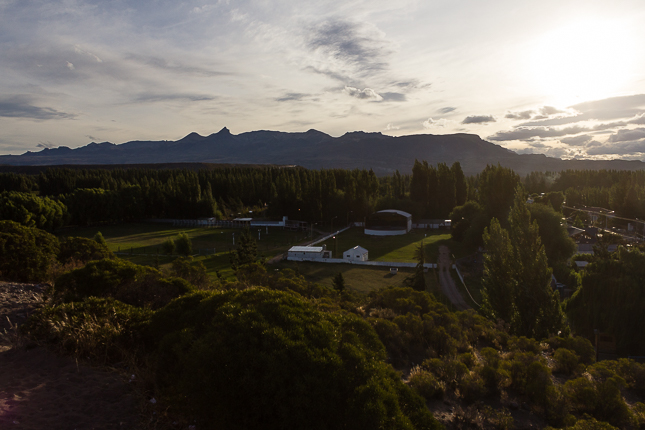 Los Antiguos. Santa Cruz. 2018 © Leo Micieli
Los Antiguos. Santa Cruz. 2018 © Leo Micieli
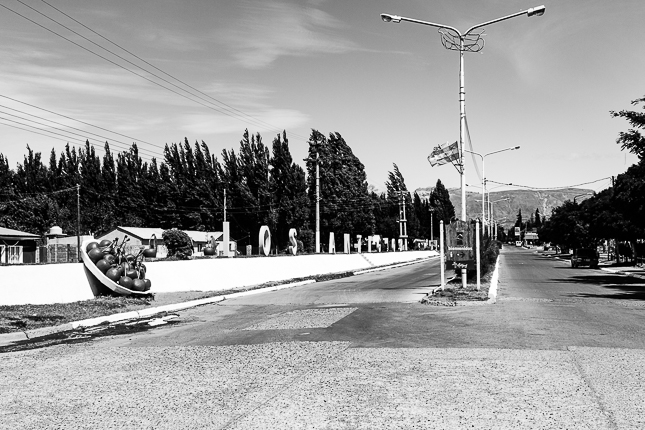 Los Antiguos. Santa Cruz. 2018 © Leo Micieli
Los Antiguos. Santa Cruz. 2018 © Leo Micieli
 Los Antiguos. Santa Cruz. 2018 © Leo Micieli
Los Antiguos. Santa Cruz. 2018 © Leo Micieli
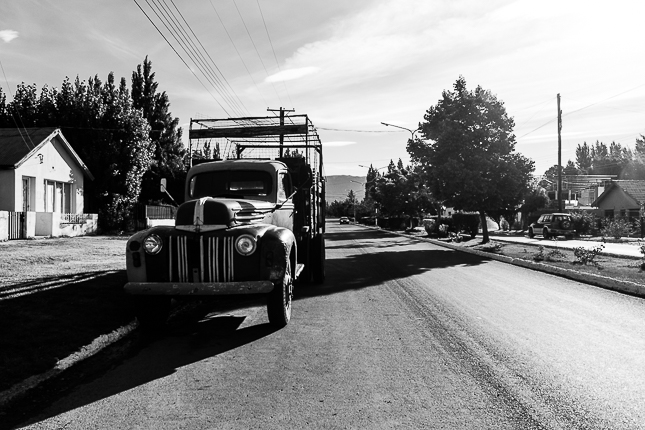 Los Antiguos. Santa Cruz. 2018 © Leo Micieli
Los Antiguos. Santa Cruz. 2018 © Leo Micieli
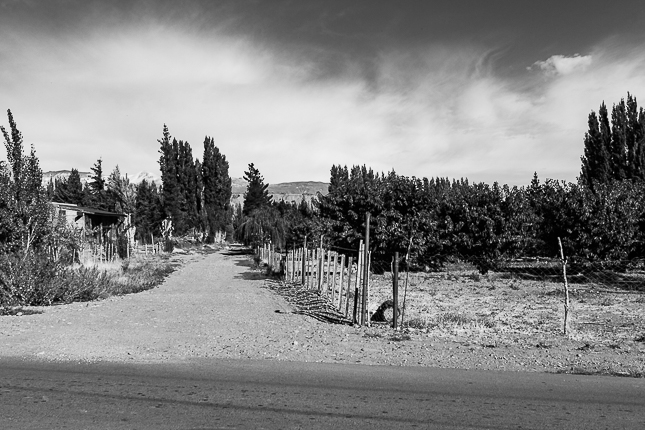 Los Antiguos. Santa Cruz. 2018 © Leo Micieli
Los Antiguos. Santa Cruz. 2018 © Leo Micieli
The town is called Los Antiguos due to the old aonikenk indians spent their last years of life on this quiet and plain lands located on the shores of the vast Buenos Aires Lake. The name in english literally means 'The Ancients'.
This is the second largest lake in South America and the waters are shared by Argentina and Chile, in where the name is General Carrera. Once again, the original name in aonikenk language is 'Chelenko', and it means turbulent or tempestuous lake. It looks like that before my eyes when I visit it, with dynamic and shaken waters, wide and turquoise, imposing.
 Buenos Aires Lake. Los Antiguos, Santa Cruz. 2018 © Leo Micieli
Buenos Aires Lake. Los Antiguos, Santa Cruz. 2018 © Leo Micieli
 Buenos Aires Lake. Los Antiguos, Santa Cruz. 2018 © Leo Micieli
Buenos Aires Lake. Los Antiguos, Santa Cruz. 2018 © Leo Micieli
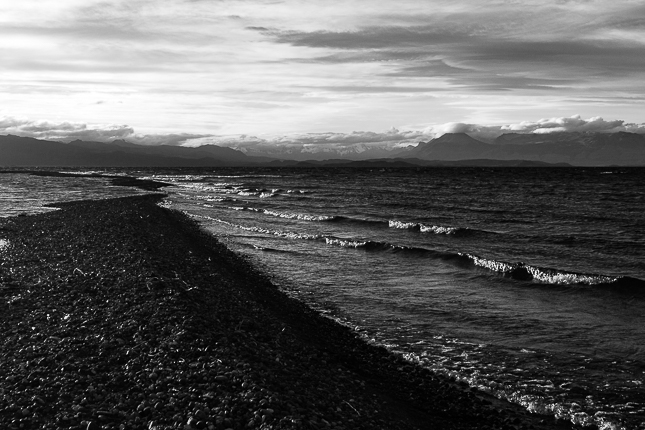 Buenos Aires Lake. Los Antiguos, Santa Cruz. 2018 © Leo Micieli
Buenos Aires Lake. Los Antiguos, Santa Cruz. 2018 © Leo Micieli
 View of Buenos Aires Lake and Los Antiguos from Chile Chico. Aysén Region, Chile. 2018 © Leo Micieli
View of Buenos Aires Lake and Los Antiguos from Chile Chico. Aysén Region, Chile. 2018 © Leo Micieli
But there are issues that affect Los Antiguos. Just to name a few: the sewage treatment plant whose capacity is largely exceeded by the number of people, which are a little more than 5000. On the picture below it can be seen and imagined the consequences. The other issue, that also happens in the rest of the country, is the massive use of agrotoxins. Los Antiguos is the National Capital of Cherry, the crops are abundant and the celebration of the National Feast is every year on January. Pesticides harm the quality of fruits, a lot of money is spent in its use y, which is worse, pollute the water and the air, damage the environment and the health of the people, something that has been widely proved by experts and producers who little by little start to grow their fields naturally.
I recommend to watch the work of the great photographer Pablo Piovano in his essay 'The human cost of agrotoxins'.
Link---> The human cost of the agrotoxins. Pablo Piovano.
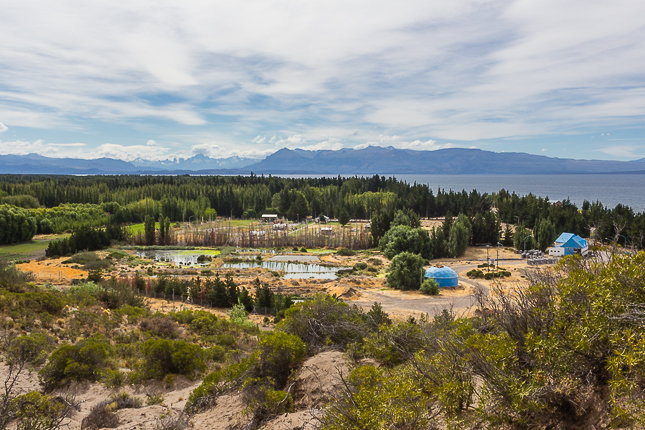 Sewage treatment plant. Los Antiguos, Santa Cruz. 2018 © Leo Micieli
Sewage treatment plant. Los Antiguos, Santa Cruz. 2018 © Leo Micieli
After thousands of kilometers, after passing through tens of towns, cities, locations, all sorts of roads, raw nature and modern artificiality, some factors start to appear and are repeated frequently as to the relationship that human being has with Patagonia. If something like this is repeated, it must be considered, over all if it represents a harm in any scope, and even more if the harm has no way back. I a few words, it's about the neglect, the damage and the oblivion towards what is nourishing this land, towards the cultures that were coherent with that and to the way to solve economic and social problems, always crossed by petty interests. Los Antiguos is not out of this situation, and this is translatable not only to the rest of the Patagonian territory but to the country, although in this huge and at the same time sparsely populated region the impression is even larger. There's a big difference between the romantic, commercial and touristic idea of Patagonia and what is found entering just a little in daily realities, many of which are such hidden that not even the inhabitants know about it.
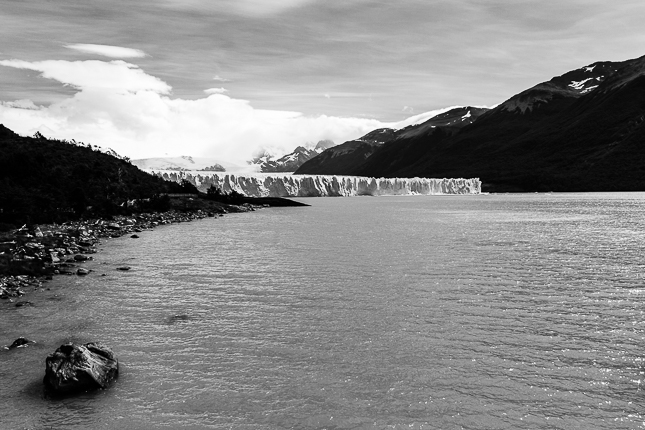 Perito Moreno Glacier. Santa Cruz. 2018 © Leo Micieli
Perito Moreno Glacier. Santa Cruz. 2018 © Leo Micieli
 Punta Bandera on the shores of Lago Argentino. Santa Cruz. 2018 © Leo Micieli
Punta Bandera on the shores of Lago Argentino. Santa Cruz. 2018 © Leo Micieli
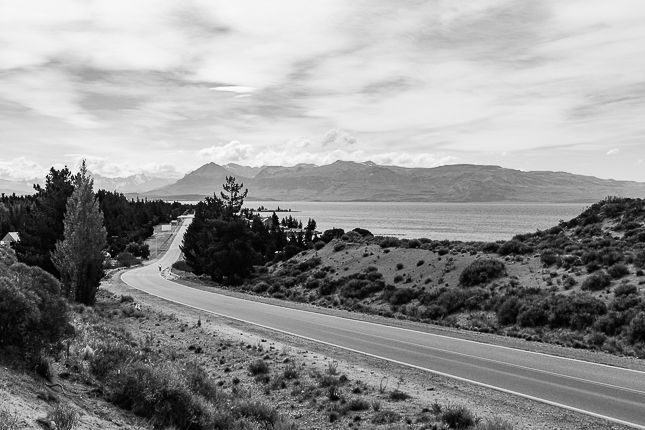 Entry to Los Antiguos and Buenos Aires Lake. Santa Cruz. 2018 © Leo Micieli
Entry to Los Antiguos and Buenos Aires Lake. Santa Cruz. 2018 © Leo Micieli
There's so much to see in this Patagonia, to live, to observe, to pay attention to what is happening in this place, both far away and not-so-much from the main cities. How one behaves in front of those things, how arrived and what has changed innerly. Every day is a new experience, to face the harshness of the territory, to be immersed in different ways of living and passing through life on this environment. I comprehend better the hostile feeling of the people living here. Nothing is easy because nothing is provided, and it's hard when every single day you're conscious of this, and there's no answer on sight. At this point of humanity, climate and geographic factors can no longer be excuses.
Even so, Patagonia is still offering the best it has, what is left, with wide open hands, to see if we start to multiply it here and everywhere instead of throwing it away like a waste. It's not only a resources matter, it's about respect towards those resources and the harmony we give them.
I love this land. Its geography and people have transformed me like the gentle water that shapes the rock through millions and millions of years, little by little, no pressure, not realizing until I look back. How I wish this to be conveyed and gifted as an experience in order to walk other paths, with our feet on other footprints, and so this way, after walking a while, we know that there are better ways of passing this life than those we are used to. There wouldn't be way back, but even better, nobody would want to go back.
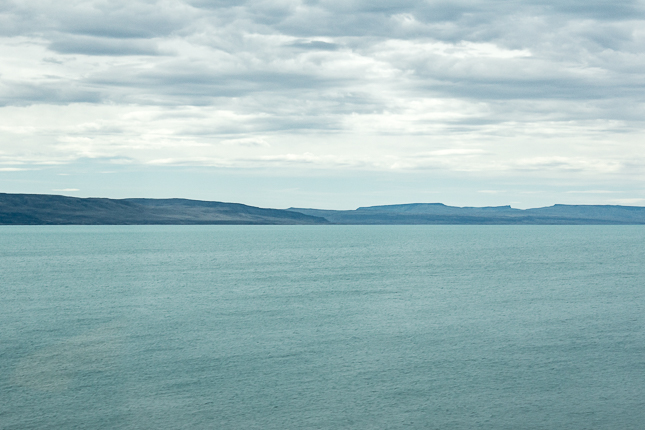 Lago Argentino. Santa Cruz. 2018 © Leo Micieli
Lago Argentino. Santa Cruz. 2018 © Leo Micieli
Julio (17/04/2018)
Leo , que te puedo decir, es mas que un relato para el que lo lee , logras ubicar al lector en el sitio que estas recorriendo ademas de informarnos sobre hechos y referencias desconocidas para la gran mayoria de los Argentinos. Realmente me llena de satisfaccion que estes viviendo todo esto y lo puedas divulgar. Ojala muchos lo lean.
Gracias, lo disfruto todo el tiempo y al menos a través de esto me gusta compartirlo. Gracias por las palabras que las aprecio muchísimo, y más ya que hace tanto tiempo de que no nos vemos. Abrazo grande.
Km 30-100 - First impressions in Patagonian Coast
Km 100-410 - The sea
Km 410-3650 - 'Stop, look, listen'. (Part 1/2)
Km 410-3650 - 'Stop, look, listen'. (Part 2/2)
Km 3650-4190. Puerto Madryn - Puerto Pirámides - Bird Island
Km 4190-4710. Trelew-Comodoro Rivadavia-Caleta Olivia
Km 4710-5750. Coast of Santa Cruz. (Part 1/2)
Km 4710-5750. Coast of Santa Cruz. (Part 2/2)
Km 5750-6960. Tierra del Fuego
Km 6960-8800. West of Santa Cruz.
Km 8800-9670. San Jorge Gulf Basin.
Leave a Reply